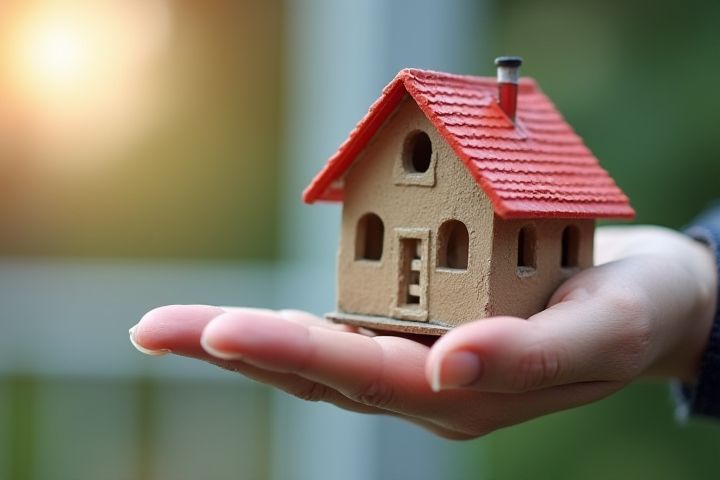
House insurance premiums are influenced by several critical factors. The location of your home plays a significant role; areas prone to natural disasters or high crime rates typically see higher rates. The age and condition of your house can impact premiums as older structures may present more risks and require additional coverage. Your claim history and credit score are also vital; a record of frequent claims or poor credit can lead to increased rates. Lastly, the amount of coverage you choose, including deductible amounts, directly affects your premium costs, with higher deductibles usually resulting in lower premiums.
What Affects House Insurance Premiums
Location
Location significantly influences house insurance premiums, with the average annual cost varying from $1,000 to over $3,000 depending on geographic factors. Properties in areas prone to natural disasters, such as hurricanes or floods, often incur higher premiums, reflecting the increased risk. Additionally, urban settings typically face higher insurance costs due to increased crime rates and density, while rural locations may benefit from lower premiums due to reduced risks. Living near facilities such as fire stations or hospitals can also result in discounts, enhancing the affordability of your insurance coverage.
Home's age and condition
The age of your home significantly influences your house insurance premiums, as older homes often have outdated systems or materials that may pose greater risk. For example, homes built before 1978 may still contain lead-based paint, which can lead to higher liability concerns. The overall condition of your property, including the state of the roof, plumbing, and electrical systems, also plays a crucial role; well-maintained homes typically attract lower premiums. Insurers assess these factors to determine the likelihood of claims, so investing in renovations or regular maintenance can help reduce your annual insurance costs.
Construction materials
The construction materials of your home significantly influence house insurance premiums, as they determine the property's durability and susceptibility to damage. Homes built with sturdy materials like brick or stone typically enjoy lower premiums due to their resistance to fire, pests, and severe weather. Conversely, houses constructed with wood may incur higher insurance costs because they are more vulnerable to fire damage and rot. When evaluating your policy, consider the long-term benefits of using resilient materials, as they can lead to substantial savings on insurance over time.
Home security features
Home security features significantly impact house insurance premiums, often resulting in lower costs for homeowners. Installing a comprehensive security system, including alarms and surveillance cameras, can reduce premiums by up to 20%. Insurance providers typically assess factors like the presence of deadbolts, motion-sensor lighting, and window locks when determining your coverage rates. By enhancing your home's security, you not only protect your property but can also enjoy substantial savings on your insurance policy.
Deductible amount
The deductible amount significantly impacts your house insurance premiums. A higher deductible typically results in lower monthly premiums, as you assume more financial risk in the event of a claim. Conversely, opting for a lower deductible increases your premiums, providing greater financial security during a loss. When selecting your deductible, consider your budget and the likelihood of filing a claim to find the best balance between premium cost and out-of-pocket expenses.
Coverage limits
Coverage limits are a critical factor influencing your house insurance premiums, as they determine the maximum payout your policy will cover in the event of a claim. Higher coverage limits typically lead to increased premiums, reflecting the greater financial risk taken on by the insurer. When setting your limits, consider factors such as the rebuilding cost of your home and personal belongings, as under-insuring can leave you exposed to significant losses. Balancing adequate protection with affordability ensures your premium remains manageable while still safeguarding your investment.
Claims history
Claims history significantly impacts house insurance premiums, as insurers assess your past claims to determine risk levels. A homeowner with multiple claims may face higher premiums, reflecting the increased likelihood of future claims. Conversely, a clean claims history can lead to lower premiums, rewarding your responsibility and minimizing risk for insurance providers. On average, homeowners may see a 10-15% increase in premiums for each claim made, underscoring the importance of maintaining a good claims record.
Credit score
Your credit score significantly impacts your homeowners insurance premium, as insurers often view it as an indicator of risk. A higher credit score, typically in the range of 700 to 850, can lead to lower premiums due to a perceived lower likelihood of filing claims. Conversely, a lower credit score, particularly below 600, may result in increased rates, as it suggests potential financial instability. Insurers may also use your credit history to gauge how responsibly you manage your financial obligations, thereby influencing their overall assessment of your risk profile.
Proximity to fire services
Proximity to fire services significantly impacts house insurance premiums, with locations near a fire station often enjoying lowered rates. Homes situated within five miles of a fire department typically experience a reduction in premiums, sometimes by 10% to 20%, due to the decreased risk of fire damage. Insurance companies evaluate response times and the availability of fire protection services, with rapid response enhancing your safety and insurability. Therefore, understanding your home's distance from fire services can lead to better insurance options and potential savings.
Weather risks
Weather risks significantly influence house insurance premiums, with properties located in regions prone to severe weather events facing higher rates. For instance, homes in hurricane-prone areas may see premiums increase by 30% to 50% due to the heightened risk of wind and flood damage. Similarly, properties in tornado-prone states often experience increased premiums due to the catastrophic damage potential, with average windstorm claims reaching $22,000. Factors such as the frequency of local storms, historical claims data, and building materials also play crucial roles in determining the final premium you receive.
